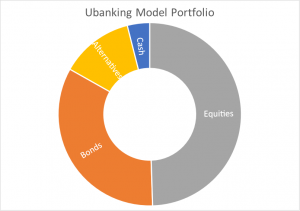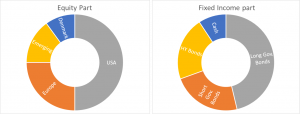Neptoon.dk is a tool or product offered by legal Danish entity, Neptoon ApS. Neptoon ApS also owns www.neptooninvest.dk. Neptoon ApS is 100% owned by CEO, Author, MSc in Finance and Cand.Oecon Thomas Peter Clausen (see more on About Us).
Neptoon ApS is a legal succession of the likewise digital investment company, ubanking ApS, that operated from 2020-2021 as substantially a pilot project. A pilot projecting testing global market demand for online global investment solutions.
Neptoon ApS is not a bank, and nor is it an advisory company, hence is not required to be legally monitored by local FSA, Finanstilsynet. Neptoon merely produces suggested investment solutions, that Users can either accept or reject. All responsibility is on User. Neptoon ApS will however apply for the licence in 2022 as Neptooninvest.dk has advisory elements to it.
Membership-based digital investment banking is a rapidly growing business around the world. A major driving vehicle is the Fintech industry and it’s development of User-friendly, cheap and transparent analytical and monitoring solutions for portfolios and markets. Investment Banking thus changes fast these years following the decade-long transformation on the financing side. Loans. But the digital investment innovation is still in it’s infancy and mostly relating to individual stocks.
The business for digital Stock investment banking is actually already a big and established industry. It works like this. User, the member of a community (site), subscribes on an ongoing basis to an online analytical model or trusted person or group, that regularly suggests individual stocks to either buy or sell. Based most often on Technical Analysis (TA) but also Fundamental Analysis (FA).
The digital industry for more advanced global investment solutions with asset classes, currency, stocks etc. is however, for many reasons, very new. Among those reasons is probably that it requires somewhat more complementary analytical power from academics and market professionals and maybe lack of demand.
Neptoon.dk is exactly that. Multi-asset class global investments. But, not only is it a multi-asset class investment framework, it is also designed to encompass investors from individual regions. So, an Indian User gets suggested another portfolio than a Swedish User. Despite same risk profile and expectations.
Essentially, Neptoon.dk is a membership-based wealth management company, to which Users (members) don’t transfer any money or portfolio as with regular banks. As member in Neptoon.dk, User merely has outlay for the membership, essentially leaving User with no risk on Neptoon.dk. Yet, still User gets professional portfolio and wealth planning solutions. It’s just not driven directly by the expensive hands of a human bank employees sitting in physical bank domiciles. It’s in the hands of a Robot, already created by academics and professionals in financial markets.
In a flow-based configuration, User ultimately downloads professional and tailored investment solutions. A trade-ticket, just ready to execute. A piece of digital investment software, made readily available for investors looking for access to cheap, flexible, objective and professional financial investments on the global market place.
On top of this, Users will receive a notification, whenever Neptoon changes or recalibrates the designed optimal investment framework. Only paid Users can access these trading or recalibration details. So, Neptoon.dk is much more than a one-time optimization of User’s portfolio and wealth plan. Neptoon.dk is a digital asset manager that can even be manually User-driven.
Behind the curtain is the Neptoon.dk framework which is composed of a complex set of scientific building blocks, that fortunately stay safely behind the curtains of the User accessible and visible platform. These building blocks together, also constitute the “Neptoon Robot” that guides manual User modifications in portfolio constructions.
The general idea with the platform is therefore for Users to easily and intuitively get, create, modify and trade financial portfolios, without relying on expensive and subjective advice from banks. All portfolio calibrations are carried out based on the market’s own objective expectations.
As a member, User more specifically gets full view, test and modify access to four basic standard investments solutions and analysis. All solutions, dynamically and optimally created, within an investment universe of cheapest global Investment Funds (normally ETF’s). These standard solutions are frequently recalibrated and optimized to adapt to changing market cyclical and structural conditions.
The big innovation in Neptoon.dk, however is the “Dashboard”. The Dashboard follows the flow-structure as a natural ending point, where User can become her own professional manager and modify core financial assumptions, and dynamically view the impact on portfolio and future wealth plan. When turning on the Portal as manual, User naturally deviates from objective assumptions.
The autopilot in the system takes the market way. However, that might of course be wrong, and perhaps leave User with the ideal flight. For her. Many private investors are not so obsessed with risk-adjusted returns as professionals and of course as in Neptoon.dk. If she prefers just higher returns then the Robot can help in building the best-possible portfolio given just that.
Neptoon.dk is not a trading platform, nor is it a portfolio holding or custody service. A such, User has to keep portfolios and trade all investment suggestions via her usual platforms or banks. Essentially this structure prevents any payment from User besides the invoice of membership. Neptoon.dk is a stand-alone investment software, not unlike those used in professional bank wealth management. Just smarter and cheaper.




